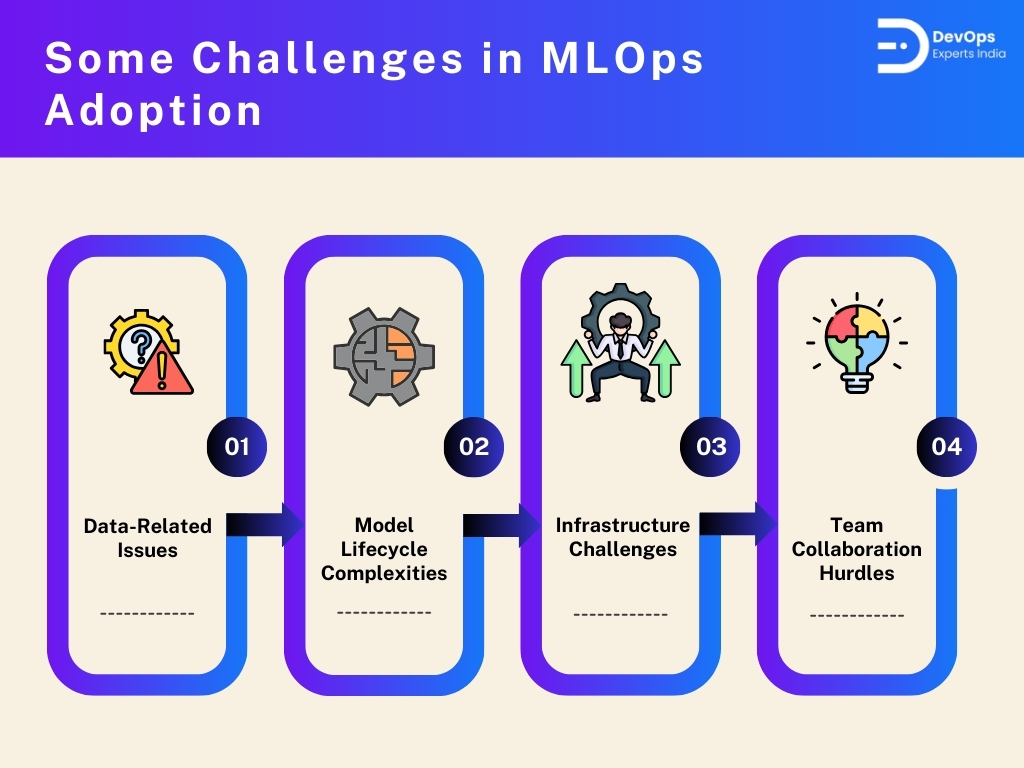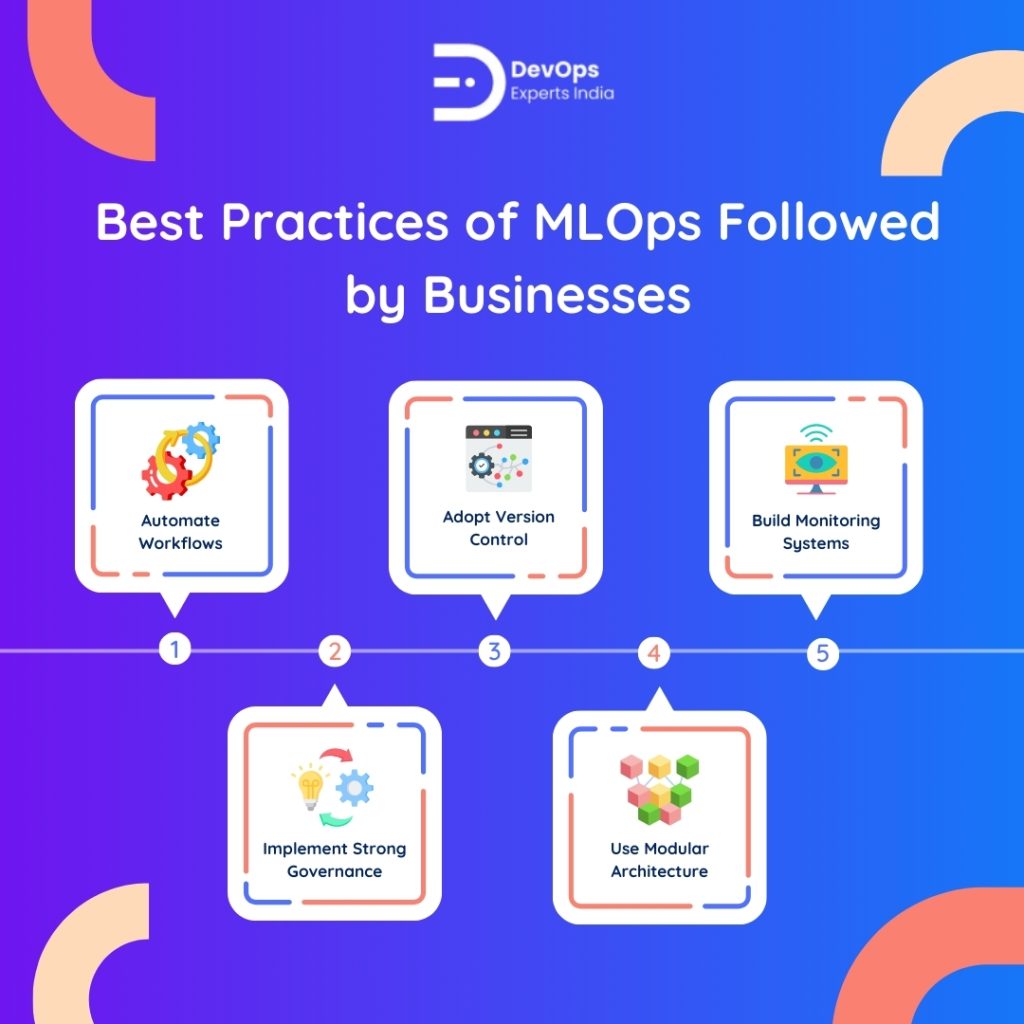Artificial intelligence or more specifically, machine learning (ML) has grown from a rhetorical idea to discuss the fundamental building blocks of advanced technologies. Personalized recommendations and even the diagnostics of healthcare—ML applications are changing industries. Yet moving an experimental machine-knowledge ML model toward a productive system is not without a few considerations.
This is where MLOps comes in—’Machine Learning’ and ‘Operations’- which help reconcile the desire for data science with the practicality of engineering to produce ML models effectively.
Here we dissect what MLOps involves, what difficulties ML teams face, how to approach it right, what tools to use, and how MLOps solutions are evolving into a proper engineering subfield.
What is MLOps Solutions?
MLOps is the initial of the Machine Learning Operations that seeks to develop methods for deploying and operating machine learning models in production environments. While being an offspring of DevOps, MLOps is targeted at the solutions to specific challenges related to the ML life cycle, including working with big data and managing the issues of model drift and reproducibility.
As opposed to what can be described as DevOps for code that deals with software application deployment, MLOps solutions address the significantly higher levels of variability inherent in models that are evolving, the variety of data sources, and the computational environments where the models are used. It compels the workflows of the ML to be efficient, depression, and reliable for practical use to be made.
Significance of MLOps in the Current Organizations
MLOps is a requirement for organizations actively deploying and relying on ML solutions. Here are key reasons for its significance:
Seamless Deployment: MLOps helps in deploying the models in the shortest period possible, with the least amount of interference from manual intervention.
Collaboration: It helps in aligning the MLOps engineers with the engineers and the information technology operations team in an organization to work as one team and hence allows for a better understanding of each other’s duties.
Reduced Time-to-Market: Bureaucracy is powered by automation and the solution providers’ large-scale architectures, enabling businesses to start using ML solutions rapidly.
Scalability and Reproducibility: It is important to note that MLOps solutions standardize all processes to allow ML models to scale and reproduce results under different conditions.
Monitoring and Maintenance: This way models are always up to date and as frequently as required to cater for changes in the model, its parameters, and the regulatory framework.
Related Blog: What is DevOps And Why is it Important in Software Development
Key Challenges in MLOps Adoption

Implementing MLOps is not an easy thing.
Here are the critical challenges organizations face:
1. Data-Related Issues
Large and complex modern datasets usually imply complex data processing pipelines.
Data quality and consistency are critical, but these are somewhat difficult to maintain, more so when dealing with real-time data.
2. Model Lifecycle Complexities
Versioning models and datasets can become a problem if there are not the right tools for that.
Retraining, deployment, as well as monitoring of models that involve internal stakeholders, all need to be in harmony.
Management of model drift and decay is a critical factor for models to sustain good performance in the long run.
3. Infrastructure Challenges
There is the fact that the creation of a more scalable foundation to support ML use cases is a high resource.
Complexity is added in storage and computing by hybrid and multi-cloud forms of environments.
4. Team Collaboration Hurdles
The cohesion between data science, engineers, and IT employees typically means it has to change the culture of an organization and its processes.
One of the primary challenges that can happen in the process of MLOps is that the objectives can be incongruent, or the communication can be inadequate.
Best Practices of MLOps Followed by Businesses
Successfully implementing MLOps requires adopting strategic practices:

1. Automate Workflows
By applying CI/CD methodologies to sets of scripted pipelines, the training, testing, and deployment of a model are made dependable and efficient.
2. Adopt Version Control
Version control across datasets, models, and code is also necessary to make certain reproducibility. The uses of tools such as Git and DVC to simplify versions have been outlined.
3. Build Monitoring Systems
It is used to monitor model performance, alert you to drifts, and help you detect when your model is out of compliance.
4. Implement Strong Governance
Specific business decisions that must be made involve defining policies that will address issues of model fairness, explainability, and regulation like GDPR or CCPA.
5. Use Modular Architecture
The reusability of components aids in the creation of flexible architectures that support the fast creation of proofs-of-concept.
Most Used Platforms and Models in MLOps
Several tools and frameworks for MLOps adoption
Version Control & Experiment Tracking: Based on the project, used technologies include MLflow and DVC (Data Version Control).
Orchestration & Automation: Kubeflow.org, Apache Airflow, Argo.
Model Deployment: OS, TensorFlow Serving, PyTorch Serving, KubeSeldon.
Monitoring & Governance: AI, WhyLabs, Prometheus.
These tools assist in the optimization of many aspects, collaboration, and validation of a model’s functionality in a production environment.
The Future Trends of MLOps Solutions
Based on the analytical findings, the outlook of MLOps appears rather bright with the development of AI capabilities and cloud solutions.
Some emerging trends include:
Zero-Touch ML Operations: Optimized automation to reduce the level of intervention from an actual human being.
Ethical AI Standards: That is, implementing MLOps measures into frameworks of ethical artificial intelligence.
Standardization: Industry standardization of MLOps processes in terms of the best practice methodologies used.
Concluding Thoughts
MLOps is no longer a luxury; it is a new engineering discipline that helps to bridge the gap between the prototype and the production models. This paper has presented how various issues can be met, proper practices applied and with appropriate tools, the true potential of using machine learning for any business can be realized.
Therefore, investing in MLOps solutions is a crucial step toward building sustainable and scalable AI and ML-based systems.
FAQs
What is the primary goal of MLOps?
A key facet of aiming to transform the Machine Learning lifecycle into an operational process is known as MLOps solutions. This includes enforcing repeatable processes, output duplication, and the ability for data science and engineering to work together to reliably and scalably deploy machine learning models.
How does MLOps differ from DevOps?
DevOps focuses on software development and operations, and MLOps specifically addresses machine learning needs, such as data preprocessing, model updates, and performance tracking. MLOps is an extension of DevOps with a focus on ML models and including requirements peculiar to them.
What are the key tools to get started with MLOps?
Some widely used tools for MLOps include:
- For Version Control: MLflow, DVC
- For Orchestration: Kubeflow, Apache Airflow
- For Deployment: To achieve growth and optimization of machine learning models TensorFlow Serving and Seldon Core.
- For Monitoring: WhyLabs, Evidently AI






